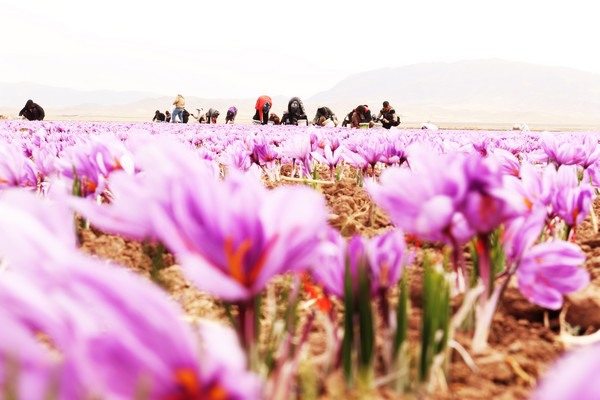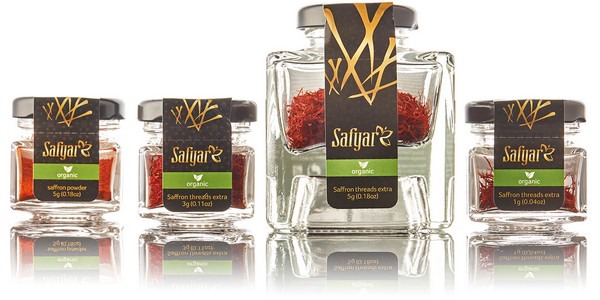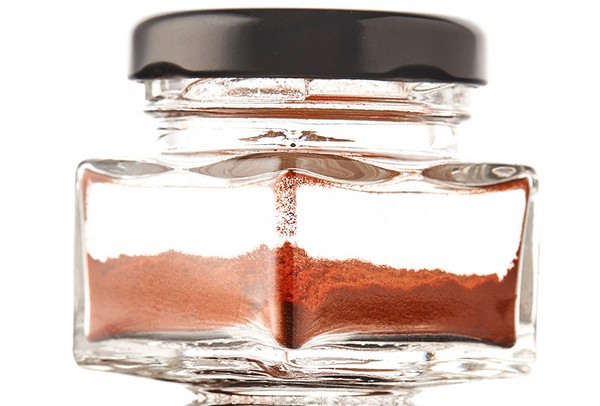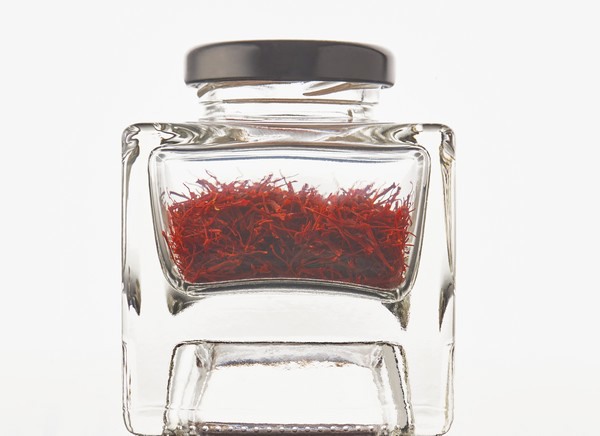Paying €5,000/kg is nothing unusual for saffron. This 'red gold' is the pistil of the crocus flower. It's one of the priciest spices. That's because it's harvesting and selection is very labor-intensive. You need between 110,000 and 170,000 of flowers for a single kilogram of saffron. However, in recent months, the coronavirus pandemic has made it difficult to sell this valuable spice on the European market.
 A crocus field in Iran
A crocus field in Iran
Iran
Iran is the most important saffron production country. The climate and soil of the Khorasan region are perfect for growing croci. This region is in the north-eastern part of Iran. Seventy percent of the global saffron production comes from there. Babaak Golyardi is an importer on the Iranian market. He's a Dutch businessman with Iranian roots. "It actually began as a joke. I brought a kilogram of saffron along with my usual imported Iranian fare. That was ten years ago. In 2017, saffron sales were going so well that I started a separate company for it - Saffraan.nl."
Top-quality
There are many players in the market. So, Babaak decided to specialize in top-quality Iranian saffron. "This product's quality varies greatly. It's very dependent on what people are willing to pay. In Iran, quality ranges from 'less good' to true royal class. This falls under the varieties like Sargol and Negin. That's Persian for diamond. We concentrate on those."
"These varieties make up only three percent of the total production. The wide range of quality has to do with pistil selection. These stems' ends are deep red and the rest yellow. We go for the really deep-red saffron. It has a superior color. It also demands the grower's attention as well as care during selection," explains the importer.

European approach
Babaak not only focuses on high quality. He also uses a European approach. "We have certification and perform laboratory tests. This is to ensure we have the best smelling, tasting, and colored saffron. We do this with a French partner, who is knowledgable in this. We then package our clients' saffron in glass jars. We have an organic range of saffron too. Here, there are even stricter controls, from the field to packaging. We fly the Iranian saffron in, in 25kg bales. It mainly goes via Germany. Customs officials there know Iranian products and what they are dealing with."
 Babaak has an organic saffron range.
Babaak has an organic saffron range.
Consumption in Europe
Once packaged, most of the saffron goes to European wholesalers. There are, however, vast differences in saffron consumption. "It's a well-known product in southern Europe. For example, saffron's used to color paella rice, or in certain risotto dishes. It's less known in the Netherlands. Here, it mainly goes to top restaurants to give dishes that extra allure," Golyardi says.
 Saffron is used to, for example, give color to the rice used in paella.
Saffron is used to, for example, give color to the rice used in paella.
But, in recent months, the coronavirus pandemic greatly affected trade. "Saffron's a true luxury item," continues Babaak. "It's primarily used in the hospitality industry. That affected us in two ways. Firstly, we had to deal with a lockdown. Secondly, we saw that restaurants tended to economize. Then, saffron's quickly replaced by cheaper alternatives. Fortunately, sales are slowly picking up again. However, a few weeks ago, some of our clients could only sell one percent of their normal volumes."
 Thanks to a special machine, saffron can be processed into a powder too.
Thanks to a special machine, saffron can be processed into a powder too.
It also isn't easy to trade with Iran. "I speak the language and know the customs. But, you also have to deal with financial embargoes. I can, for instance, not pay my Iranian suppliers directly. I have to do so in a roundabout way. That makes things difficult sometimes. It could, however, also be one of our strengths. There are 80 million people in Iran. They eat mostly fruit and vegetables. It's, therefore, an important sales market, with potential."

Fraud
This expensive product is prone to fraudulent practices. "A common con is coloring corn silk. There's a trick to see if you're dealing with a fake product. Put it in a glass of cold water. Saffron, after all, only releases its color in warm water. But many of these tests aren't 100% conclusive. It's especially important to work with a reliable partner. You could also be dealing with 100% saffron, but that's has been heavily sprayed with pesticides. I don't understand that. This kind of spice goes directly into, say, rice or tea. It should be a genuinely pure product," concludes Babaak.
For more information: Babaak Golyardi
Babaak Golyardi
Saffraan.nl
209 Via Verdi
2272 WG Voorburg, NL
Tel: +31 (0) 880 666 666
Email: info@saffraan.nl
Website: www.saffraan.nl
